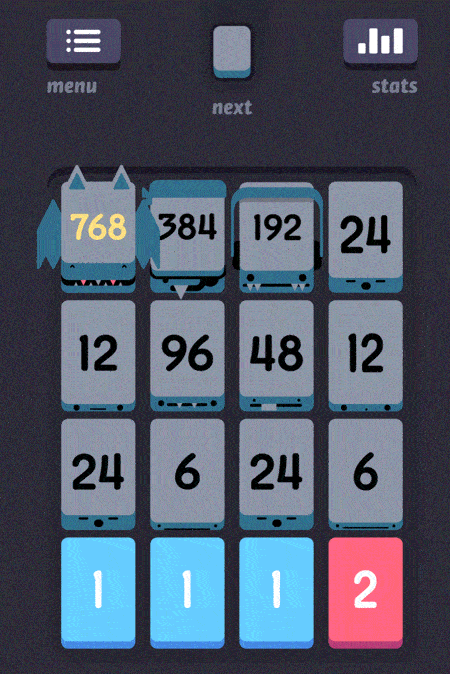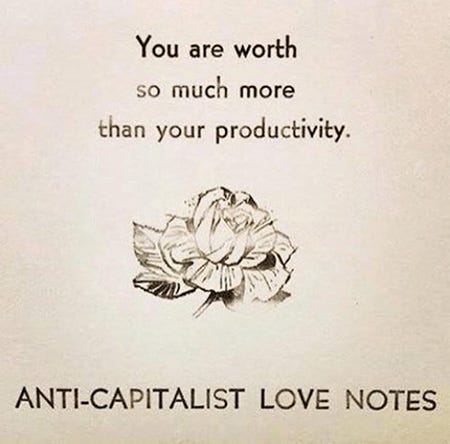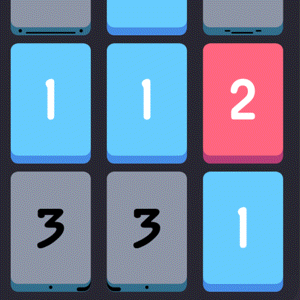Threes
Keeping it together
I’ve started playing Threes again.
Released in 2014, Threes is a mobile phone puzzle game that consists of smooshing together progressively larger number blocks. I played a lot of Threes when it came out, inspired by friends who were publicly obsessed. You may have played Threes yourself or else encountered its more popular rip-off “2048,” which used a similar concept but with inferior design.
In 2022, I am here to tell you that Threes is still an infinitely playable game. Challenging enough to be engaging but low stakes enough not to be stressful. Elegant. Satisfying. Cute.
I’m not sure why I initially picked Threes up again after eight years. Now that I have, it’s taken up a hole in my time where social media used to be. I used to scroll Instagram without really knowing why or how I got there. I’d never really feel any better after doing it, in fact I’d usually feel worse. I opened Instagram during in-between moments when I needed to tune out and mindlessly swipe down. Now I open Threes instead, to tune in and mindfully swipe left, right, up, and down.
In Threes, I enter a flow state. It takes some skill not to die too quickly, not to let the little numbers totally overwhelm and ultimately clog your board. Still, Threes calms my nervous system. In Threes, the task is clear and I am in control. I am decisive, I am moving forward.
But is it antisocial? To choose to hang out with cartoon numbers instead of human content?
I realized last week that the game Threes is based around two colors: blue and red. I also realized that the graphic design client I’m working with uses the same colors, in pretty much the same shades. So for weeks I have been pushing around blue and red pixels on screens, with my finger and my mouse.
Red is blood, body, survival, and in that way it can also be livelihood, that which puts bread on the table. Blue is communication. Blue Red can also be communicating for livelihood, like I’ve started doing again in earnest.
Red Blue is also about bodies and communication, how bodies communicate to get their needs met. I communicate with myself in many ways, and criticism is one of them. Beating myself up is part of how I get things done. Relentlessly questioning whether what I am doing in any given moment is the best use of my time, saying mean things to myself about it either way.
So it’s no surprise that I also criticize myself for playing Threes. For “wasting time.” Self-help mogul Louise Hay (whose advice one must take with a teaspoon of salt) says that procrastination is a way of delaying your own good. Putting off the things that would move you closer to accomplishing your goals by filling the time with something else.
There was a grant opportunity for performance art that I worked on the last two months with every intention of applying. And ultimately I just couldn’t get it to the finish line. I was too busy with work, too busy with small children, just overwhelmed. I let the deadline pass. And I am so disappointed.
But that wasn’t because I was playing Threes. The amount of time I spend playing this mobile phone game is an indicator of the state of my mental health, not the cause of its deterioration. Threes is a symptom, not the problem.
Even as somewhat of an extrovert, I’ve learned how much artmaking requires some amount of solitude. As covid calms or at least we pretend it does, activities and events are piling up in my world again. Even when they are fun, adding them on top of the already delicate balance of work and family and art feels like I am navigating a game board of Threes. Taking on more than I have the capacity for and then clogging when I can’t do it all.
Threes is not like Tetris, where new blocks fall faster and faster as the game progresses. The blocks in Threes have bigger and bigger numbers, but for each turn you can take as much time as you want to decide where to move the next block. You can theoretically set your own pace, though this is much harder to pull off in practice. Often when I die in the game it is because I find myself swiping quickly and rhythmically, when maybe if I had given myself permission to take my time I could have made a better sequence of decisions.
I’ve been struggling to keep it together lately. I am blessed with quick moods, so I don’t stay in any particular funk for a debilitating amount of time. But I’m more fragile, more ready to blow, more ready to fall apart at the smallest provocation. Yelling at my family, yelling at myself, then afraid of myself. If I could slow down in the moment, maybe I could pause before losing it. If I could slow down long before the moment, maybe I could not be so wound up in the first place.

I actually dictated a couple of these paragraphs to myself on my phone from a hot tub. It’s Spring Break for the kids so we took advantage of the privilege of remote work to visit some friends up the coast in the redwoods. Coincidentally, the same friends who originally got me into Threes. When I got in the hot tub by myself, the kids were long asleep. It was quiet and dark, no lights except the stars behind the silhouette of the tall trees and the glow of my phone (in dark mode, of course). The moon was a sliver, a crescent new moon off to the west on its way below the horizon. I couldn’t see it just then, but I had caught a glimpse of it earlier so I felt aware of it hiding behind the house. I was naked. I was warm. It was wonderful.
And even in the midst of that splendor, I had to battle away the thought that I should be doing something else. That instead of getting in that hot tub at 9PM I should have sat in front of my computer screen for another hour or two being “productive.” But wouldn’t that also have been wasting time I could spend with these trees? Wasting time I could be spending with myself?
When time feels scarce, it’s hard to remember that not every minute needs to be accounted for. I guess in a way Rainbow Squared was (is?) trying to hold on to so many minutes. I wanted to take all the hours days weeks of just keeping it together while taking care of small children and turn the time itself into art. Like Maintenance Art.
The moments I can steal to play a game on my phone feel transgressive. The moments I steal to make art used to feel transgressive too, until I found a way to bludgeon myself with them. Produce! Produce! Produce! In some ways, pushing numbers around on my phone screen is a way of finally doing what I want for its own sake in the fucking moment.
Except now here I am, turning even that into Art. Writing an essay about the time I spend on a phone game, dictating to myself in a hot tub to turn that time into Art too.

In case you missed it, for the next while I’ll be sharing updates monthly on the first quarter moon, like this one.
Why the first quarter moon? I already receive some email newsletters on new moons as well as on full moons, but none on the first quarter specifically. Rising midday, the first quarter moon is still visible in the evening, as opposed to the third quarter moon that comes out late at night. If the new moon is about release and renewal, and the full moon is about culmination, the first quarter is about what happens in between. The first quarter moon is about building and creating. Rainbow Squared is also about building and creating, about process, in a constant state of becoming.
Thanks for reading.


